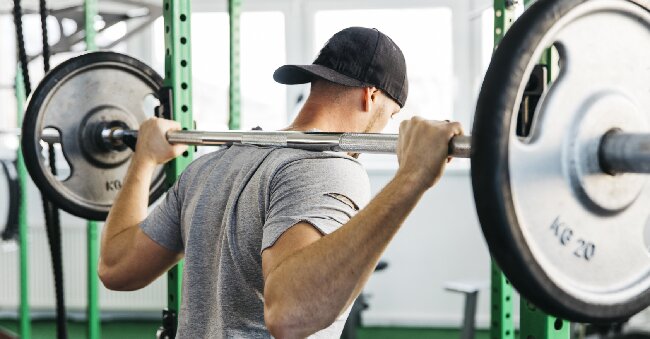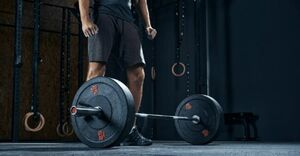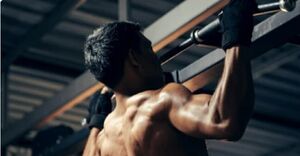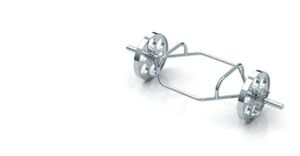
Smith Machine Squat vs. Barbell Squat: Pros, Cons, and Technique
Are you looking to enhance your lower body strength and build muscle mass? In the world of strength training, squats are a fundamental exercise.
When it comes to performing squats, there are different variations like the Smith Machine Squat and the Barbell Squat.
We will explore the differences between these two popular squat variations, their pros and cons, as well as how to properly perform each exercise.
Whether you’re a beginner or a seasoned lifter, understanding the nuances of each squat variation can help you optimize your workout routine for maximum results.
What Is a Smith Machine Squat?
A Smith Machine Squat is a weightlifting exercise that primarily targets the lower body muscles such as quadriceps, hamstrings, and glutes. It involves the use of specialized equipment known as a Smith Machine.
The Smith Machine Squat is particularly effective in engaging these muscle groups due to its guided vertical motion, which helps stabilize the body during the movement. The Smith Machine consists of a barbell attached to a sliding track within steel rails, allowing you to move the weight up and down with added safety controls.
By integrating Smith Machine Squats into your strength training regimen, you can enhance not only leg strength but also overall lower body stability and balance. This exercise is beneficial for individuals looking to improve their squat form and boost their power for activities like running, jumping, and functional movements.
What Is a Barbell Squat?
A Barbell Squat is a fundamental strength training exercise that engages various muscle groups, including the quadriceps, hamstrings, and glutes. This compound movement requires the use of a barbell and proper form for execution.
Engaging in Barbell Squats not only targets the major muscle groups mentioned but also involves the lower back, core, and calves for stabilization. To perform a Barbell Squat, you will need a barbell and a squat rack. It is crucial to maintain correct form throughout the movement to ensure effectiveness and reduce the risk of injury. Keeping your chest up, core braced, and knees in line with your toes are key components of proper form in a Barbell Squat.
What Are the Differences Between Smith Machine Squat and Barbell Squat?
The key differences between a Smith Machine Squat and a Barbell Squat lie in the equipment used, safety considerations, and the range of motion allowed by each variation.
- When performing a Smith Machine Squat, the equipment provides a guided vertical movement, which can be helpful for individuals who are new to squatting or those needing extra support. The fixed path of the bar on the Smith Machine ensures stability but may limit natural body mechanics.
- In contrast, Barbell Squats allow for a more free-form movement, engaging stabilizing muscles and promoting overall balance and coordination. This freedom of movement requires greater focus on maintaining proper technique to prevent injury. The range of motion in a Barbell Squat is typically greater than in a Smith Machine Squat, allowing for a deeper squat position that can enhance lower body strength and flexibility.
Range of Motion
The range of motion differs between a Smith Machine Squat and a Barbell Squat, impacting muscle activation, joint stress, and overall exercise performance.
In a Smith Machine Squat, the fixed bar path restricts natural movement patterns, limiting the range of motion mainly to a vertical up-and-down motion. This can result in less activation of stabilizing muscles and decreased engagement of the core compared to a free-weight Barbell Squat.
On the other hand, with a Barbell Squat, the free movement allows for a deeper range of motion, engaging more muscle fibers and promoting better strength gains. To optimize technique, focus on keeping your chest up and leading the movement with your hips in both variations to ensure proper alignment and maximum muscle engagement.
Stability
Stability plays a crucial role in both Smith Machine Squats and Barbell Squats, influencing body mechanics, muscle activation, and exercise safety.
When performing squats, whether on a Smith Machine or with a barbell, the stability of your body directly impacts the efficiency and safety of the exercise. Smith Machine Squats, due to the guided movement along a fixed path, may provide a bit more stability compared to free-weight Barbell Squats.
This fixed path also limits the body’s ability to engage stabilizing muscles fully. To enhance stability during squats, focus on keeping your core engaged, maintaining a neutral spine, and ensuring your feet are planted firmly on the ground throughout the movement.
Muscle Activation
Muscle activation patterns vary between Smith Machine Squats and Barbell Squats due to differences in body mechanics, resistance levels, and exercise performance.
In Smith Machine Squats, the guided vertical movement restricts the natural range of motion, placing more emphasis on the quads. On the other hand, Barbell Squats require stabilization through the entire movement, engaging the core and surrounding stabilizer muscles more.
The fixed path in the Smith Machine may lead to decreased activation of certain muscle groups compared to the free weight Barbell Squats, where the body has to control the weight entirely. Understanding these differences is essential for designing workouts that target specific muscle groups effectively.
Safety
Safety considerations are paramount when performing Smith Machine Squats and Barbell Squats to minimize injury risk, maintain proper form, and ensure exercise consistency.
-
Proper form is crucial to prevent potential strain on the lower back and knees.
-
When executing Smith Machine Squats, ensure that the barbell is positioned securely on the fixed vertical poles to avoid tipping.
-
For Barbell Squats, maintain a neutral spine, engage the core, and lower down as if sitting back into a chair.
-
Consistent technique plays a vital role in long-term strength gains and reduces the likelihood of plateaus.
-
Remember to listen to your body, start with manageable weights, and gradually increase the load as you progress.
Which One Is Better: Smith Machine Squat or Barbell Squat?
Determining whether the Smith Machine Squat or Barbell Squat is better depends on individual preferences, training goals, and fitness levels. Each variation offers unique benefits and drawbacks.
For instance, the Smith Machine Squat provides added stability and safety due to its guided vertical movement, making it suitable for beginners or individuals recovering from injuries.
On the other hand, Barbell Squats are effective for improving overall strength, as they engage more stabilizer muscles, enhancing balance and coordination. They require strict form and can be challenging for those with mobility issues.
Understanding these differences can help individuals tailor their squat variation to meet specific fitness objectives and training needs.
Pros of Smith Machine Squat
Smith Machine Squats offer benefits such as enhanced stability, reduced injury risk, and targeted muscle isolation, making them valuable for strength training and muscle development.
This exercise is particularly beneficial for individuals looking to improve their form and technique while minimizing the risk of injury, as the guided vertical movement of the Smith Machine helps maintain proper alignment throughout the squatting motion. By providing a controlled path for the barbell, users can focus on engaging specific muscle groups effectively, leading to better muscle activation and growth. Incorporating Smith Machine Squats into your workout routine can assist in building overall lower body strength, enhancing balance, and increasing muscle endurance.
Cons of Smith Machine Squat
Despite their benefits, Smith Machine Squats have drawbacks such as limited range of motion, reduced core stability challenge, and the potential for strength plateaus in advanced lifters.
The constrained movement pattern enforced by the fixed vertical bar in Smith Machine Squats can hinder the natural biomechanics of a squat, limiting the engagement of stabilizing muscles and compromising full muscle activation. This reduced activation can impede the development of overall core stability, which is crucial for maintaining proper form and balance during various exercises.
The fixed pathway of the bar can restrict adaptation and progression, making it challenging for individuals who aim for continuous strength gains as the body may not be challenged sufficiently to adapt and grow stronger over time.
Pros of Barbell Squat
Barbell Squats offer advantages such as full-body muscle activation, functional strength development, and enhanced balance and stability, making them ideal for overall fitness and muscle engagement.
The dynamic nature of Barbell Squats engages multiple muscle groups simultaneously, resulting in efficient calorie burning and increased metabolic rate. By challenging the core, glutes, quadriceps, hamstrings, and lower back, these compound exercises promote a strong, resilient physique.
The coordination required during Barbell Squats improves proprioception and spatial awareness, contributing to enhanced balance and stability in various movements and everyday tasks. Embracing Barbell Squats in your workout routine can lead to comprehensive strength gains and functional fitness benefits.
Cons of Barbell Squat
Barbell Squats come with potential drawbacks such as higher injury risk, greater technical complexity, and the need for proper equipment setup and spotting, which may pose challenges for beginners.
- When performing Barbell Squats, especially with heavy weights, there is an increased risk of injuries such as strained muscles, back issues, and shoulder discomfort if the proper form is not maintained throughout the exercise. Incorrect technique can lead to serious consequences, like muscle imbalances or joint stress.
- Without the right safety precautions in place, such as a secure rack and spotter, the potential for accidents or dropping the weight unexpectedly becomes a significant concern. Therefore, understanding the importance of equipment safety and enlisting a trained spotter for heavy lifts is crucial to minimize these risks and protect oneself during Barbell Squat workouts.
How To Perform a Smith Machine Squat?
Executing a proper Smith Machine Squat involves maintaining correct body position, using appropriate resistance levels, and focusing on controlled movement to optimize muscle activation and safety.
- To begin, position yourself under the bar with your feet shoulder-width apart, ensuring the bar rests comfortably on your upper back.
- Lower into a squat by bending at the hips and knees, keeping your chest up and back straight.
- As you rise back up, push through your heels and engage your core for stability.
It’s crucial to select a resistance level that challenges you but allows for proper form. Start with lighter weights and gradually increase as you build strength and confidence in your squatting technique.
How To Perform a Barbell Squat?
Mastering the Barbell Squat requires proper foot placement, core engagement, and consistent muscle activation throughout the movement to ensure effective strength development and injury prevention.
When setting up for a Barbell Squat, ensure your feet are shoulder-width apart with toes pointing slightly outward. This positioning helps distribute the weight evenly and maintains balance during the exercise. As you descend into the squat, focus on engaging your core muscles to stabilize your spine and protect your lower back. Throughout the movement, it’s crucial to keep your chest up, back straight, and knees tracking in line with your toes to avoid undue stress on the joints. By prioritizing these key factors, you can perform the Barbell Squat with proper form and maximize its benefits.
What Are the Common Mistakes to Avoid When Performing These Squat Variations?
Common mistakes to avoid during Smith Machine Squats and Barbell Squats include improper form, excessive weight, inadequate warm-up, and lack of attention to body alignment, all of which increase the risk of injury.
Improper foot placement is another prevalent error that many individuals make during these exercises. Placing the feet too far forward or backward can lead to imbalance and reduced stability. Failing to engage the core muscles throughout the movement can put unnecessary strain on the lower back. It is crucial to maintain a neutral spine and keep the chest up to ensure proper alignment.
Neglecting to control the descent and ascent of the squat can also contribute to injuries. Remember, gradual progression in weight and meticulous attention to form are key for a safe and effective squatting technique.




No Comments